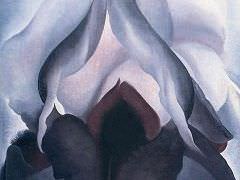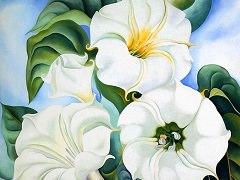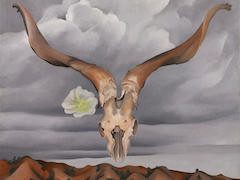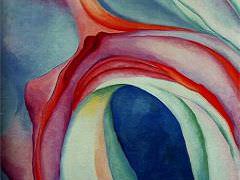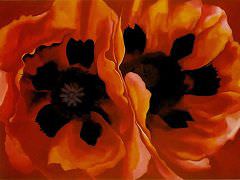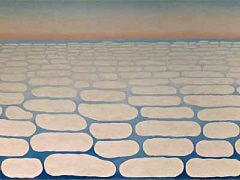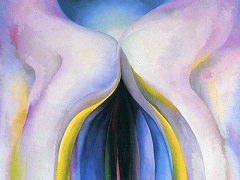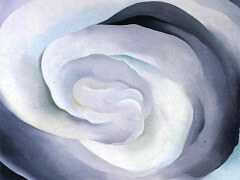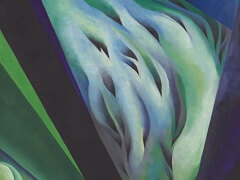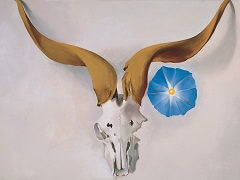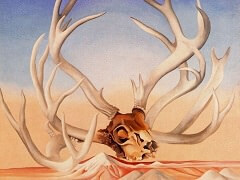The Horse's Skull on Blue, 1930 by Georgia O'Keeffe
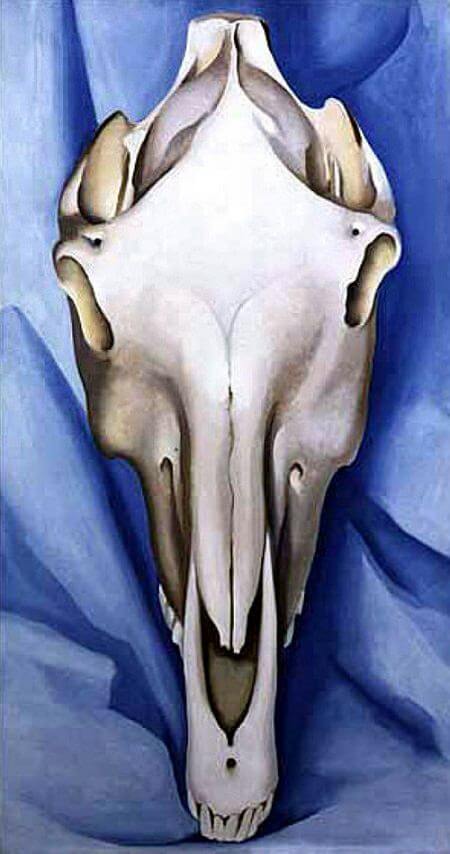
Georgia O'Keeffe was intimately acquainted with an American scene which for many of her contemporaries existed only in the imagination, and she knew that it encompassed more than the cliched image of "a dilapidated house with a broken-down buckboard out front and a horse that looked like a skeleton." The ideas that propelled these artists - many of them Eastern "city men" who, she claimed, "would have been living in Europe if it had been possible" - to her appeared "pretty ridiculous. The people who talk about the American scene don't know anything about it." The discussion of art's native grounds peaked in the 1930s, just as O'Keeffe was creating her skeletal evocations of the New Mexican scene. Provoked by the vociferous discussions about writing "the Great American Novel - the Great American Play - the Great American Poetry," O'Keeffe determined to make "an American painting..They will not think it great," she admitted, "with the red stripes down the sides - Red, White, and Blue - but they will notice." It was, she later admitted, "my joke on the American scene."
Like the 1931 example on its striped background, most of the skulls were viewed frontally and symmetrically placed within the vertical canvases. While some were depicted against flat, dark grounds, O'Keeffe commonly placed the subject on a fabric whose folds offered compositional interest and variety. The Horse's Skull on Blue (1930), one of the earliest skeletal paintings, is also among the simplest and most redolent of tradition; the creased fabric ground evokes memories of late still-life compositions by Cezanne.

